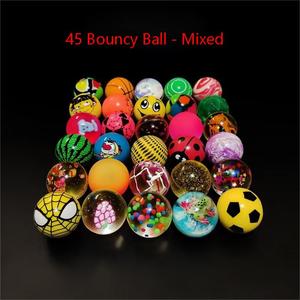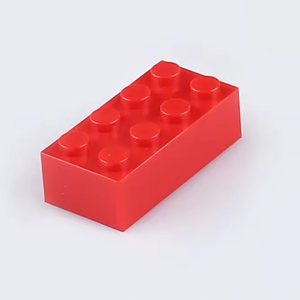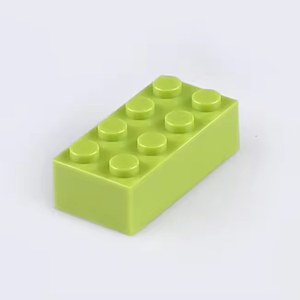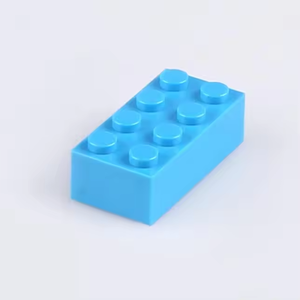(145589 products available)




























































































































































































All toys refer to the various toys available for different age groups. Here are some common types:
When choosing toys for sale, buyers should consider their target market. Ideally, they should get toys suitable for various age groups. For instance, toys that are ideal for infants and toddlers are plush toys, stacking rings, and teething toys. On the other hand, toys for preschoolers include art and craft supplies, puzzles, and play sets. Also, toys for school-aged children include board games and building sets. Buyers should also get toys suitable for different occasions. For instance, toys suitable for birthday gifts, Christmas, and back-to-school.
Buyers should get toys that can help in the child's development. For instance, educational toys, STEM toys, and building sets. Also, they should get toys that encourage physical activity, such as outdoor toys and sports equipment. Toys that promote social skills include board games and play sets. Buyers should also get toys that enhance creativity and imagination, such as art and craft supplies and musical instruments.
Buyers should get toys that are safe for children to use. For instance, they should carefully examine the material used to make the toy. The toy should not contain any harmful chemicals. Also, they should ensure the toy does not have small parts that can be a choking hazard to young children. More importantly, buyers should get toys that meet the manufacturer's country safety standards. For instance, toys with CE markings.
To cater to various clients' preferences, buyers should get both battery-operated and non-battery-operated toys. Battery-operated toys are convenient since they come with sound and light effects. At the same time, non-battery-operated toys are ideal for clients looking for toys that will not disturb the child's nap. Also, to cater to various clients' preferences, buyers should get both branded and unbranded toys. Toys with well-known brands can attract brand-loyal customers. At the same time, unbranded toys can offer a budget-friendly alternative to brand-loyal customers.
Buyers should get toys that are easy to maintain and clean. For instance, toys that are machine washable or can be easily wiped down. Also, they should get toys with clear instructions on how to maintain and clean them. Finally, to stand out from other toy retailers, buyers should get unique toys. Such as toys from local artists or toys with a cultural theme.
The design of toys is based on factors such as age, target market, culture, and material. For instance, plastic toys are designed to last long. On the other hand, fabric toys are soft and cuddly.
Function
Toys are designed for various functions and purposes. For example, educational toys help kids learn. These toys teach kids about numbers, colors, shapes, and letters. Kids can also learn about science, history, and geography through toys like puzzles and games. Learning toys foster cognitive development and enhance critical thinking skills. Art and crafts toys encourage creativity and self-expression. Kids can do painting, drawing, scrapbooking, and sewing with these toys.
Features
Most toys have unique features that improve playtime and make them more entertaining. For instance, sound and music features help to stimulate a child's senses. Toys with lights and sounds capture a child's attention quickly. Interactive toys respond to a child's actions. These toys move, speak, or change their functions when touched. Moreover, many modern toys have technology features like apps, Bluetooth, and Wi-Fi. Such toys offer new experiences and make learning more fun.
Safety
The safety of a child is the most important thing when designing toys. Manufacturers use non-toxic materials to make toys. This ensures that kids are safe when playing, even if they put the toys in their mouths. Additionally, sharp edges and small parts are clearly indicated on the packaging because they can be hazardous. Strong toy construction is also vital. Toys that are well-built and durable can handle rough play without breaking.
Age Appropriateness
Toys made for certain age groups are better for that age. These toys do not have small parts that can choke a baby or pieces that might harm a child. For instance, toys for toddlers do not have tiny parts, and they are sturdy so that the child can play with them safely.
Choking Hazard Warning
These warnings tell people that a toy is not safe for a certain age group. If a toy has tiny parts, it needs a warning that says a child under this age can choke on these parts.
Non-Toxic Materials
Toys that do not harm when touched or put in the mouth are safe. These include toys that have labels showing they are safe. Labels that say a toy is safe to play with show that the materials used to make it are safe for children.
Soft, Flexible Parts
These toys are safer because they do not hurt when a child plays with them. These include edges that are rounded and parts that are soft and flexible instead of hard so that a child does not get hurt. For instance, a toy car has rounded edges so that a child does not get a cut when playing with it.
Durability
A toy that does not break easily is safe. This is because a child can play with it for a long time without it breaking into pieces that might harm the child. For instance, a wooden toy has a label showing it is sturdy and will not break easily.
Brand Reputation
A toy from a brand known for making safe and good toys is likely safe. This is because the brand works hard to keep its toys safe so that kids do not get hurt. For example, Fisher-Price is a brand that makes safe baby toys.
Q1. Do all toys have the same size?
A1. No, all toys do not have the same size. The size of a toy depends on its type and the target age group. For instance, stuffed animals can be large or small depending on the brand. Likewise, some dolls are big, while others are miniatures. Toys for babies and toddlers are usually larger to avoid choking hazards.
Q2. Do all toys have the same color?
A2. No, all toys do not have the same color. Toys can come in various colors depending on the manufacturers' choices. Some toys have multiple colors to attract kids. Nevertheless, color differences do not affect the quality of the toy.
Q3. Do all toys produce sounds?
A3. Not all toys produce sounds. While some toys, like musical instruments and talking dolls, are made to produce sounds, others, like building blocks and stuffed animals, are silent.
Q4. Are all toys safe for kids?
A4. Not all toys are safe for kids. Some toys have small parts that can be dangerous for younger kids because they can swallow them. Also, some toys can have sharp edges that can cut kids.